- yuxip's home page
- Posts
- 2015
- 2014
- December (2)
- November (1)
- October (2)
- September (6)
- August (2)
- July (1)
- June (3)
- May (4)
- April (1)
- March (2)
- 2013
- December (1)
- November (1)
- October (3)
- September (3)
- August (2)
- July (1)
- June (2)
- May (1)
- April (3)
- March (1)
- February (1)
- January (1)
- 2012
- 2011
- My blog
- Post new blog entry
- All blogs
FMS Meeting04/22/2013 --FMS-midrapidity correlations
Last week I showed some preview of FMS neutral pion - midrapidty jet like corrleations, and a few QA plots based on day095 to day098 data of Run11.
Some hot towers in EEMC generated a very non-uniform detector responses in term of jet acceptance. The short conclusion was that at least for this
period of data I should exclude EEMC in reconstructing jet-like clusters.
In this post I will show some initlal results on FMS pion - BEMC jet like cluster correlations based on day095 data which consists of 16 runs.
FMS pions
Pions are reconstructed by combining photons on the FMS, each photon is allowed to be paired up with mutiple other photons. The relevant cuts to
select pions are:
pT_{pion} > 2.5 GeV
2.8 < eta_{pion} < 4.0
0.1 GeV < M_rr < 0.25 GeV
Zrr < 0.7
There is also an additional cut that requires the reconstructed photon to be one-half cell away from the detector boundaries. Figure 1. shows the
diphoton mass spectrum after pT, eta and Zrr cut.
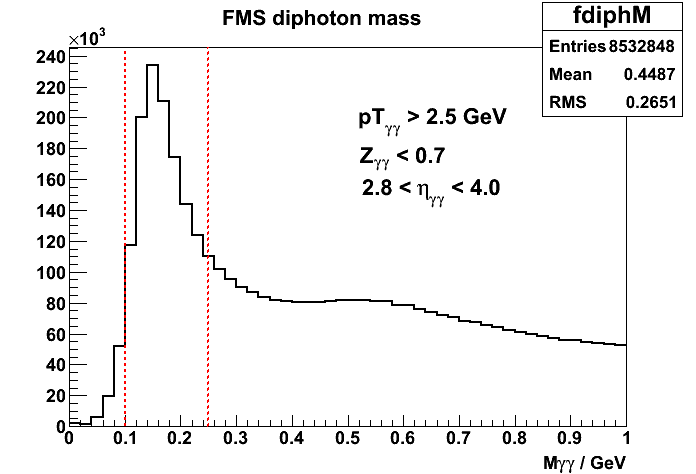
Figure 1. FMS diphoton mass
Figure 2 shows the energy and pT of pi0 candidates.

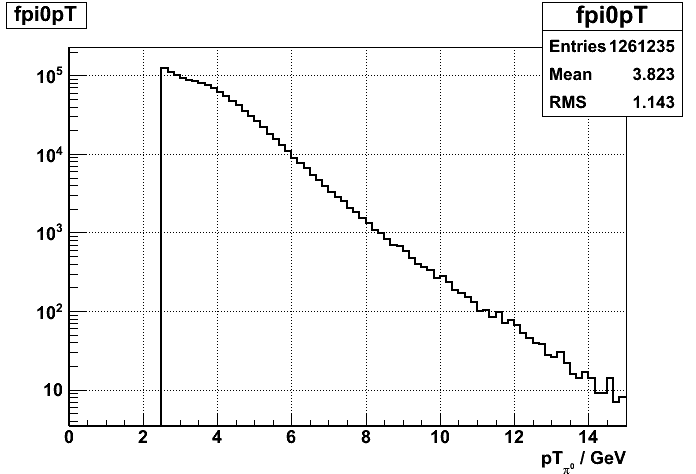
Figure 2 a). pi0 energy Figure 2 b). pi0 pT
Notice that for this test sample I didn't put in the energy dependent corrections to the gain. This correction will be applied when I am processing the full dataset.
Figure 3 shows the eta and phi distribution of FMS pi0 candidates.


Figure 3 a). pi0 eta distribution Figure 3 b). pi0 phi distribution
BEMC jet-like clusters
For those events which have at least one pi0 above pT = 2.5 GeV in FMS a jet finder is applied to BEMC towers to look for jet-like clusters. The jet finder is based on anti-kT
algorithm with distance parameter R = 0.6. The cut on minimum pT is 1.0 GeV.
Figure 4 shows the distribution of number of jets per each event.
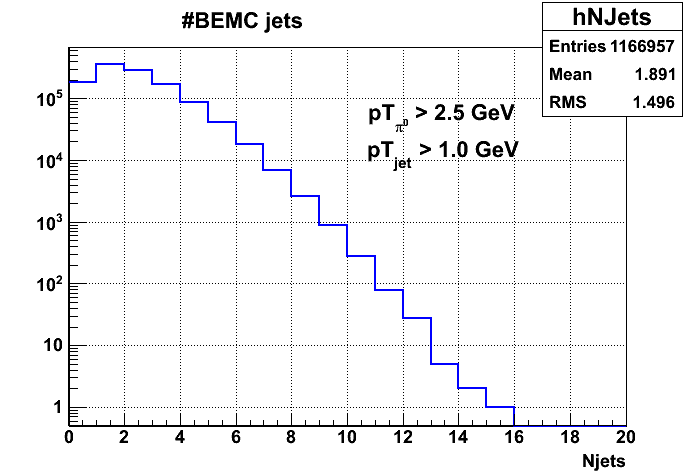
Figure 4). number of jets
Figure 5 shows the eta and phi distribution of BEMC jets

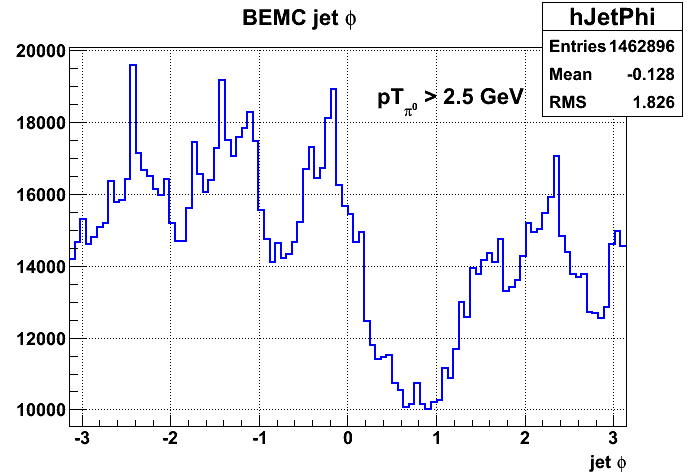
Figure 5 a). jet pseudorapidity Figure 5 b). jet phi
The hole at jet phi ~ 0.8 is due to the removal of jets which have EEMC hits, and several EEMC hot towers in the neighborhood as I showed in last week's update.
Figure 6 shows the pT of jets.
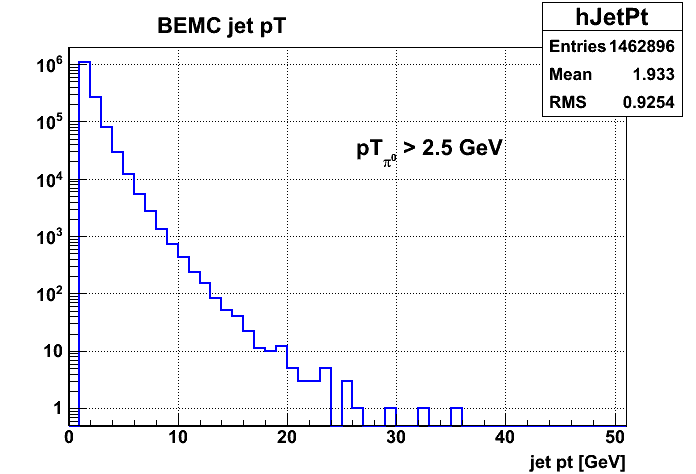
Figure 6 jet pT
Correlations
Each pi0 candidates in FMS with pT above 2.5 GeV is correlated with a BEMC jet-like cluster. BEMC jets has to be within eta (-1.0, 1.0).
Fiture 7 shows the azimuthal correlation between FMS pi0 and BEMC jets, when the pT of the associated jet is higher than pT of the pion.
This is a sample with enriched jettiness of the event.
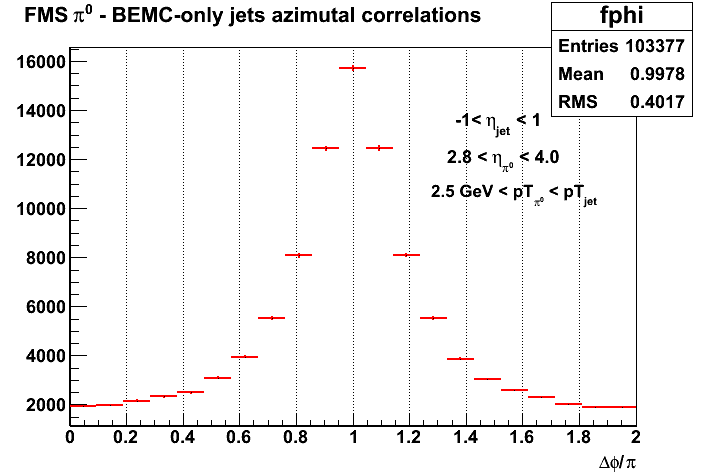
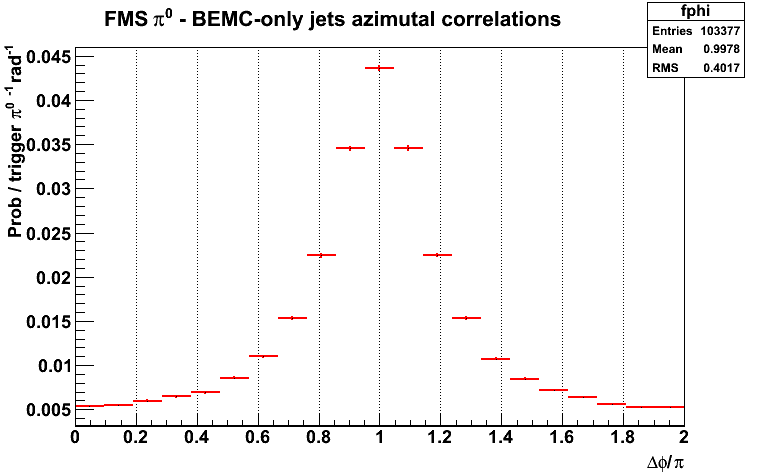
Figure 7 a). raw azimuthal correlations Figure 7 b). same as a) but normalized by # of pions and the width of phi bin

Figure 7 c). 2D azimuthal correlation
Figure 7 b) represents the coincidence probability of finding a jet separated by phi from the pion. Figure 8 shows the number of trigger pions per each event

FIgure 8. number of pions per event
Currently I am trying to find a way to separate the pion sample according to the jettiness of the away side. Due to the lack of a full jet reconstruction with TPC tracks +
BEMC towers the away side jet-like cluster is always going to be biased towards jets with higher neutral fraction from the fragmentation, which makes the association
of jets with FMS pions less clear and convincing.
One possibility I am think of right now is just to make a cut on the absolute energy scale of the jet on the away side. For example if I find an away side jet aound
abs(jetphi - piphi) < 0.2*TMath::Pi() with pt higher than 2 GeV the pion will be labeled as "recoil-found", other wise the pion belongs to another class as "no-recoils".
In the pT region close to the 2 GeV threshold there is always large ambiguities in deciding whether there is a jet on the away side due to the fluctuations in the jet
fragmentation. But this cut becomes more and more stringent in selecting zero/low away side activities for pions with higer pT.
A_N of the pions will be calculated separately for these 2 classes. Figure 9 shows the ratio between the number of pions in these 2 classes (day095 data).
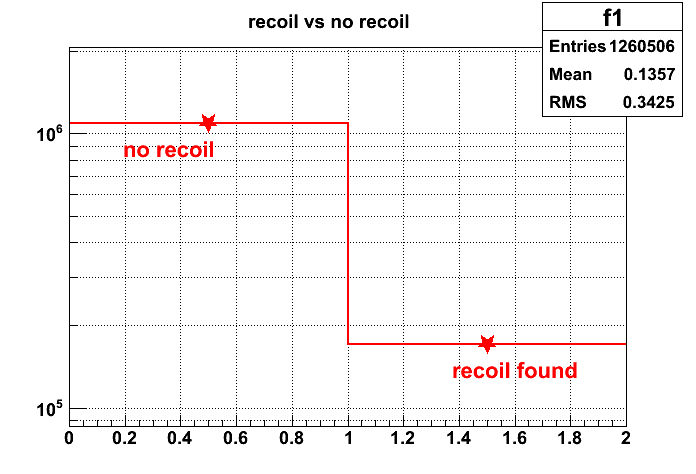
Figure 9. number of pions ( pT > 2.5 GeV ) vs recoil label
- yuxip's blog
- Login or register to post comments
